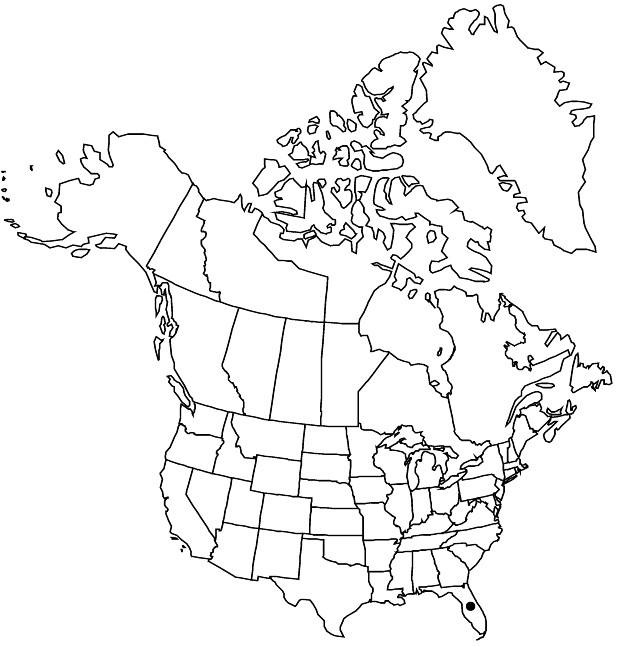Difference between revisions of "Diospyros ebenum"
Physiogr. Saelsk. Handl. 1: 176. 1781 ,.
FNA>Volume Importer |
FNA>Volume Importer |
(No difference)
| |
Revision as of 20:29, 24 September 2019
Trees, to 20(–30) m. Bark dark gray to black, shallowly furrowed, flaking in rectangular pieces from summits of ridges. Leaves persistent; petiole 0.4–0.6(–0.8) cm; blade dark green and glossy adaxially, elliptic-lanceolate to ovate, 6–10(–15) × (2–)3–5 cm, thin, apex rounded to obtuse or barely short-pointed, abaxial surface glabrous, without basilaminar glands. Inflorescences solitary flowers or 3–15-flowered cymes, borne on twigs of current season. Flowers 1.2–1.8 cm; sepals 4; petals 4; stamens 16(–32); anthers dehiscent along their entire length; pistillate flowers with 8 staminodes; styles 4, connate to near stigmas; ovary glabrous. Berries black, not glaucous, depressed-globose to globose, (3–)4–5 cm diam., glabrous. Seeds brown to black, trianguloid-ellipsoid, to 1.5 cm. 2n = 30.
Phenology: Flowering Apr–May; fruiting Jun–Aug.
Habitat: Disturbed ground, waste places
Elevation: 0-10 m
Distribution

Fla., Asia (India, Sri Lanka).
Discussion
Diospyros ebenum is the historical source of the finest jet black ebony. It bears small persimmons that are attractive to birds, allowing it to become established to a limited extent in tropical southern Florida, where it is grown as an ornamental. The plant is cultivated in the Malaysian peninsula.
Selected References
None.